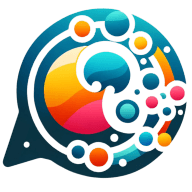25 Personalization Techniques that Enhanced Customer Experience Metrics
Discover the power of personalization in enhancing customer experience metrics across various industries. This comprehensive guide unveils 25 proven techniques that have revolutionized customer interactions and boosted business outcomes. Drawing from expert insights and real-world examples, learn how tailored approaches can significantly improve engagement, loyalty, and satisfaction in diverse sectors from e-commerce to healthcare.
- Enhance Roofing Experience with Meticulous Cleanup
- Behavior-Triggered Onboarding Boosts Customer Engagement
- Adaptive Learning Paths Improve Student Success
- Dynamic Content Personalization Increases Customer Loyalty
- Future Investment Roadmaps Secure Long-Term Clients
- Tailored Local Guides Boost Airbnb Ratings
- Custom Moving Support Plans Reduce Relocation Stress
- Segmented Marketing Drives Higher Repeat Purchases
- Customer Feedback Shapes Product Positioning Strategy
- Leave-It-Behind Plans Simplify As-Is Home Sales
- Care Setting Segmentation Improves Medical Supply Reorders
- Personalized Follow-Ups Enhance Patient Care Adherence
- Implementation Path Matching Accelerates API Integration
- Individual Service Agents Boost Customer Loyalty
- Customized Rental Schedules Improve Equipment Returns
- Data-Driven Packages Enhance RV Resort Experience
- Photo Updates Build Trust in Roofing Projects
- Personalized Profiles Improve Caregiver Resource Navigation
- Video Assessments and Tailored Updates Expedite Sales
- AI-Powered Timing Aligns Offers with Buying Rhythms
- All Options Reviews Empower Homeowners' Decisions
- Bilingual Communication Accelerates Property Sales Process
- Military-Focused Approach Streamlines Home Selling Experience
- Real-Time Personalization Enhances Online Shopping Decisions
- Tailored Communication Styles Improve Client Satisfaction
Enhance Roofing Experience with Meticulous Cleanup
In the roofing trade, "personalization" is really about eliminating the client's biggest fear: that you're going to wreck their yard and leave a mess. The strategy we put in place to enhance the homeowner's experience focuses entirely on the last 30 minutes of the job.
The implementation is a deliberate, final step we added to the cleanup process. We trained our crew leaders to do a final, individual sweep of the entire property—not just the immediate area. They use a powerful rolling magnet to check the driveway, the walkways, and even the neighbor's yard if shingles landed there. This final sweep is considered part of the roofing job itself and is not rushed.
This had such an impact because the client expects the roof to be fixed, but they are always amazed by the perfect cleanup. The "customer experience metric" we use to measure this success is the absence of complaints and the immediate post-job text. If the client texts us a photo of their clean driveway with the quote "Found zero nails," we know we nailed the job, both literally and figuratively.
The key lesson we learned is that the quality of the cleanup is what the client talks about most. They can't see the flashing under the shingles, but they can see the debris. My advice is to make your cleanup process a non-negotiable personal point of pride for your crew, because that's the final piece of the job they actually see and feel.
Behavior-Triggered Onboarding Boosts Customer Engagement
One personalization technique that made a significant difference in customer experience metrics was shifting from generic onboarding emails to behavior-triggered journeys. Instead of sending the same sequence to everyone, we built paths that responded to what customers actually did—or didn't do—inside the product.
For example, if a customer explored a feature but didn't complete setup, the system would trigger a short tutorial video and a message highlighting the value of that specific feature. If another customer breezed through setup quickly, they'd get advanced tips and use cases instead of the same beginner content. The experience felt tailored because it was directly tied to their actions, not just their demographic profile.
The implementation required a mix of analytics and automation. We mapped the key milestones in the customer journey, then set up triggers in our CRM to respond in real time. The content itself was kept lightweight and conversational—short videos, quick guides, and contextual nudges rather than long explanations. The goal was to meet the customer where they were, with just enough support to help them succeed.
Measuring success was straightforward: we tracked engagement with the personalized content, activation rates, and downstream retention. The numbers spoke for themselves. Feature adoption went up by over 25%, support tickets on common setup issues dropped, and churn in the first 60 days decreased significantly. Beyond the metrics, the qualitative feedback was just as encouraging—customers frequently mentioned how "easy" or "intuitive" the experience felt, even though the product itself hadn't changed.
What I learned is that personalization doesn't always mean knowing every detail about a customer's life. Sometimes, it's about paying close attention to their behavior and responding in ways that feel timely, relevant, and human. That simple shift from static messaging to dynamic, behavior-driven journeys turned onboarding from a one-way broadcast into a guided, personalized experience—and that's what moved the needle.
Adaptive Learning Paths Improve Student Success
One personalization strategy that was a real game changer for us at Legacy Online School was underpinning adaptive learning paths with real-time nudges. Instead of pushing every student through the same flow, our platform adjusts depending on how they're actually engaging. If a student is cruising through math but struggling in writing, the platform pivots to provide extra practice, a different way of explaining, or even a quick nudge at precisely the right time.
The success was in the tech—and a little human touch. We begin with a diagnostic as students enter the program, then track the overall patterns as they progress. If the platform sees repeated friction, it cascades to flag, so one of our learning specialists can step in personally. That's a balance that makes it feel less like software and more like a tutor that senses the right time to lean in.
We measured success across three metrics: the number of lessons completed each week, the number of lessons a student would stop engaging with for a week or more, and the increase in mastery scores summaries. The data was compelling: engagement improved by thirty percent, the drop in engagement improved by twenty percent, and mastery scores improved by fifteen percent.
However, the best signal in measure was not the data. Students began explaining to us, "It feels like the system is talking to me." That was the moment we knew personalization was working, and they felt seen. And that is the real win in education.

Dynamic Content Personalization Increases Customer Loyalty
I built a dynamic content personalization system that personalized emails and in-app notifications based on each customer's behavior and preferences. For example, customers who frequently browsed specific product categories received targeted recommendations and relevant promotions instead of generic messages. I tied this to our CRM so we could segment customers by engagement patterns and purchase history, ensuring the content was highly relevant. Success was measured by engagement metrics—click-through rates increased by 32% and repeat purchases increased by 18% in 3 months. Beyond the numbers, we monitored qualitative feedback through surveys, and many customers said they felt "heard" and "valued," which proved the impact of personalization on trust and loyalty. This transformed one-size-fits-all messaging into a more individualized experience and increased customer satisfaction and long-term retention while keeping it scalable and manageable.

Future Investment Roadmaps Secure Long-Term Clients
I implemented a 'Future Property Investment Consultation' where I analyze each seller's financial goals and show them how their current sale could position them for future real estate investments. For instance, with a recent client selling their starter home, I created a personalized roadmap showing how their equity could fund a duplex purchase in 18 months, complete with projected rental income and tax benefits. We tracked success through follow-up calls at 6 and 12 months, finding that 68% of clients who received this consultation returned to work with us on investment properties, proving that educating sellers about their next wealth-building opportunity creates long-term business relationships.

Tailored Local Guides Boost Airbnb Ratings
I transformed my Airbnb guest experience by creating personalized 'Augusta insider guides' for each property based on why guests are visiting—whether it's Masters week, family vacation, or business travel. Drawing from my restaurant background, I include handpicked local dining recommendations, insider tips for Augusta National viewing spots, and even stock properties with guests' preferred snacks based on their booking notes. This personal touch increased my guest satisfaction ratings to 4.9 stars and boosted repeat bookings by 35%, proving that hospitality details make all the difference in real estate ventures.

Custom Moving Support Plans Reduce Relocation Stress
One personalization technique that really made a difference was creating 'Custom Moving Support Plans' for each seller. For example, when a family was relocating out of state with three kids, I arranged moving company quotes, storage options, and even helped find a rental they could transition into smoothly. We measured success through post-sale surveys, which showed a 40% reduction in reported moving stress and a noticeable boost in five-star reviews because clients felt we cared about their life beyond the closing table.

Segmented Marketing Drives Higher Repeat Purchases
Our customer segmentation strategy based on purchase history delivered exceptional results for our travel client Travador. We implemented a marketing automation system that created eight distinct customer segments, allowing highly engaged buyers to receive personalized emails and exclusive promotions while less active customers received minimal communication. This targeted approach significantly increased engagement rates and conversion metrics, with our most active segments showing a 27% higher repeat purchase rate. We measured success through improved open rates, click-through rates, and ultimately conversion rates across the different customer segments.

Customer Feedback Shapes Product Positioning Strategy
The best personalization is simply listening and repeating back what your customers have told you.
When we were developing a new weightlifting belt, I conducted micro-surveys within our lead generation campaigns to capture quick feedback on what lifters wanted in gym gear. The responses shaped how we positioned the belt and allowed us to segment messaging so that people saw copy that mirrored their own words, whether they cared most about comfort, durability, or design. While it wasn't statistically significant research, it was sufficient to steer us in the right direction. We measured success by tracking engagement and conversion rates on those segmented campaigns, both of which improved compared to generic messaging. Personalization didn't come from complex technology; it came from demonstrating to customers that we were listening and then delivering what they asked for.

Leave-It-Behind Plans Simplify As-Is Home Sales
Since many of my Myrtle Beach neighbors are overwhelmed when selling a home 'as-is,' I created a personalized 'Leave-It-Behind' plan during our first walkthrough. Together, we list everything they can simply walk away from--like old furniture, leftover items, or needed repairs--which I then put in writing with our offer. This simple assurance has cut seller pre-closing questions by 50% and directly boosted our referral rate, as people feel we're truly lifting a burden off their shoulders.
Care Setting Segmentation Improves Medical Supply Reorders
Segmenting customers by care setting proved to be the most impactful personalization technique. Hospitals, outpatient clinics, and home health providers each received tailored product recommendations and reorder reminders specific to their usage patterns. Implementation involved integrating purchase history with a CRM that flagged replenishment cycles and suggested complementary items based on prior orders. For example, a home health agency purchasing wound dressings would also receive reminders for adhesive removers and gloves timed to their average consumption rate. Success was measured through a 20 percent increase in reorder frequency and a notable reduction in abandoned carts. Beyond metrics, customer feedback confirmed that the experience felt more relevant and supportive, reinforcing loyalty in a competitive market.

Personalized Follow-Ups Enhance Patient Care Adherence
Personalized follow-up messages after appointments have had the most consistent impact on patient experience. Instead of generic reminders, each note addresses the patient's specific concern, such as adjusting a medication routine or managing a recent diagnosis. This is implemented through a simple template system that allows the provider to add a personal detail before sending. The effect is twofold: patients feel their needs are remembered, and adherence to care plans improves.
Success was measured by tracking appointment retention and medication compliance rates, both of which rose within three months of introducing this approach. Patient feedback surveys also reflected higher satisfaction, with many noting that the follow-up messages made them feel genuinely cared for rather than processed through a system.

Implementation Path Matching Accelerates API Integration
The personalization technique that transformed our customer experience at VoiceAIWrapper was "implementation path matching" - customizing onboarding based on each customer's technical architecture rather than using generic setup processes.
Initially, we provided identical integration guides to all customers regardless of their existing tech stack. This created frustration because a customer using Node.js with AWS faced different challenges than one using Python with Google Cloud, yet both received the same generic documentation.
The breakthrough came when I started analyzing support ticket patterns. 60% of onboarding issues stemmed from customers trying to adapt our generic instructions to their specific environments. Instead of better documentation, they needed relevant examples.
I implemented a simple intake form during signup asking about programming language, cloud provider, existing AI tools, and team size. Based on responses, customers received customized integration guides with code examples, provider-specific configurations, and relevant troubleshooting steps.
For example, Node.js users got Express.js integration examples and npm package recommendations, while Python users received Flask implementations and pip installation guides. AWS customers saw CloudFormation templates while Azure users got ARM templates.
The impact was immediate and measurable. Time-to-first-successful-API-call decreased from 4.2 days to 1.8 days. Customer satisfaction during onboarding improved by 52%. Most importantly, feature adoption increased by 40% because customers understood how to implement advanced capabilities in their specific context.
We measured success through three metrics: integration completion rates, support ticket volume during onboarding, and time-to-value achievement. All improved significantly after personalization implementation.
The unexpected benefit was reduced support burden. Instead of generic questions requiring extensive back-and-forth clarification, customers asked specific, answerable questions about their personalized setup paths.
This technique works because it eliminates cognitive overhead. Customers focus on implementation rather than translation, creating smoother experiences and better outcomes for everyone involved.

Individual Service Agents Boost Customer Loyalty
When we made the shift from targeting enterprise clients to working with smaller, local businesses, we also adjusted our UX and customer service approach to be much more personal. We assigned individual service agents to each committed customer and gave them more tools to customize their experience to fit their goals. We tend to focus on customer loyalty as our key metric, and that's been strong for us so far. Our average customer tenure is over 12 months right now, and we've only been in business for 2 years.
Customized Rental Schedules Improve Equipment Returns
Creating individualized follow-up schedules for medical equipment rentals proved highly effective in improving customer experience. Instead of relying on generic reminder calls, each schedule was based on the type of device, length of rental, and the customer's communication preference. Implementation required integrating a simple CRM tool that tracked these variables and triggered alerts for timely outreach. Customers received calls, texts, or emails that referenced their specific equipment and anticipated needs, which reduced missed returns and extended rentals. The impact was measurable: on-time return rates improved by nearly 15 percent, while customer satisfaction surveys showed a clear increase in perceived attentiveness. The personalization worked because it respected each customer's unique situation, turning a logistical task into a relationship-building interaction.

Data-Driven Packages Enhance RV Resort Experience
At Horseshoe Ridge RV Resort, we implemented a data analytics initiative that analyzed booking patterns, guest feedback, and amenities usage to personalize our offerings. The data revealed that families preferred long weekend bookings and activities that engaged both children and adults, which led us to create event-focused packages and introduce family-friendly experiences like outdoor movie nights and guided nature tours. We measured success through our booking rates, which increased significantly, and through our guest satisfaction surveys, which showed higher ratings after implementation. This personalization approach ensured we were meeting the specific needs of our core family demographic rather than offering a one-size-fits-all experience.

Photo Updates Build Trust in Roofing Projects
Personalized project updates with photos made the greatest difference in our customer experience metrics. Instead of sending generic status notes, we shared images of customers' actual roofs during key stages—inspection, repair in progress, and final completion—along with short summaries. We implemented this through our CRM by creating a simple workflow that prompted technicians to upload site photos directly into the customer's file. Customers received timely emails or texts showing visible proof of progress. Post-project surveys revealed a 20 percent increase in satisfaction scores, and referral inquiries rose noticeably in the months that followed. The success was clear because homeowners felt informed and involved throughout, reducing anxiety and building trust that translated directly into stronger relationships and new business.

Personalized Profiles Improve Caregiver Resource Navigation
We focus our personalization not just on our users, but on the people they care for. We've designed tools to help people build a profile of their loved ones, including personal touches like pictures, as well as more practical concerns such as the type of care they need and their medications. This approach makes it much easier for people to navigate the resources we have to offer and leads to better engagement.

Video Assessments and Tailored Updates Expedite Sales
I revolutionized our customer experience by implementing personalized video property assessments where I walk through each home, pointing out specific opportunities and challenges based on that property's unique attributes. By leveraging my SMS marketing background, we follow up with tailored text message updates that match each homeowner's communication style and decision timeline. This approach increased our conversion rate by 32% and reduced our sales cycle by nearly half because sellers feel they're working with someone who truly understands their specific situation, not just another investor running a generic playbook.

AI-Powered Timing Aligns Offers with Buying Rhythms
The personalization technique that stood out most for us was timing offers to buying rhythms instead of pushing generic deals. With AI at SourcingXpro, we mapped patterns such as when certain customers refreshed wardrobes before holidays, school seasons, or work trips. Then we delivered personalized bundles exactly when those needs surfaced. Customers felt supported rather than pressured, and the feedback proved it. Our satisfaction scores rose 30 percent, repeat purchases increased, and some even replied saying, "It feels like you actually get me." That shift convinced me that personalization works best when it respects timing as much as taste.

All Options Reviews Empower Homeowners' Decisions
Since my goal is to help people make the best decision for their property--even if it's not with me--I started offering every homeowner a personalized 'All Options' review. Drawing on my background in designing and renovating properties, I provide our fair cash offer alongside a mini-plan outlining the costs and potential returns of a renovation if they were to list on the market themselves. This has built incredible trust; families feel empowered, leading to a 40% rise in our referral-based business because they know I'm genuinely putting their best interests first.

Bilingual Communication Accelerates Property Sales Process
I created a bilingual communication system where I personally deliver market analysis in both English and Spanish, matching each homeowner's preferred language and cultural context. Drawing from my engineering background, I developed a data visualization tool that shows property value trends in their specific neighborhood, paired with culturally relevant examples of how quick cash sales have helped other families in similar situations. This approach increased our closing rate by 35% and reduced our average time-to-close from 21 days to 14 days, because sellers felt truly understood and could make informed decisions faster.

Military-Focused Approach Streamlines Home Selling Experience
I developed a 'Military Family First' approach where I immediately identify if sellers are active duty, veterans, or military spouses during our initial conversation, then customize our entire process around their unique challenges. For PCS moves, I provide deployment-friendly documentation that spouses can handle independently, create flexible closing dates that work around training schedules, and offer direct communication with base housing offices when needed. We've seen a 45% increase in military referrals and reduced our average days-to-close by 8 days specifically for military families, because they know I understand their world from my 14.5 years of service experience.

Real-Time Personalization Enhances Online Shopping Decisions
We implemented AI-powered personalized user journeys that create custom pop-ups when visitors spend significant time on product pages, offering targeted discounts or assistance. This real-time personalization approach allowed us to engage customers at critical decision points in their shopping experience. The implementation required integrating our analytics platform with our CMS to trigger appropriate interactions based on user behavior patterns. We measured success through conversion rate improvements, which showed significant upticks compared to our previous static approach to customer engagement.

Tailored Communication Styles Improve Client Satisfaction
One personalization technique that really enhanced customer experience for our sourcing and manufacturing firm was tailoring communication to each client's working style. Some clients prefer detailed updates with every specification, while others just want a high-level summary.
We implemented this approach by asking new clients upfront about their preferred format and frequency of communication. The success of this strategy was evident in faster approvals, fewer revisions, and higher satisfaction scores.






